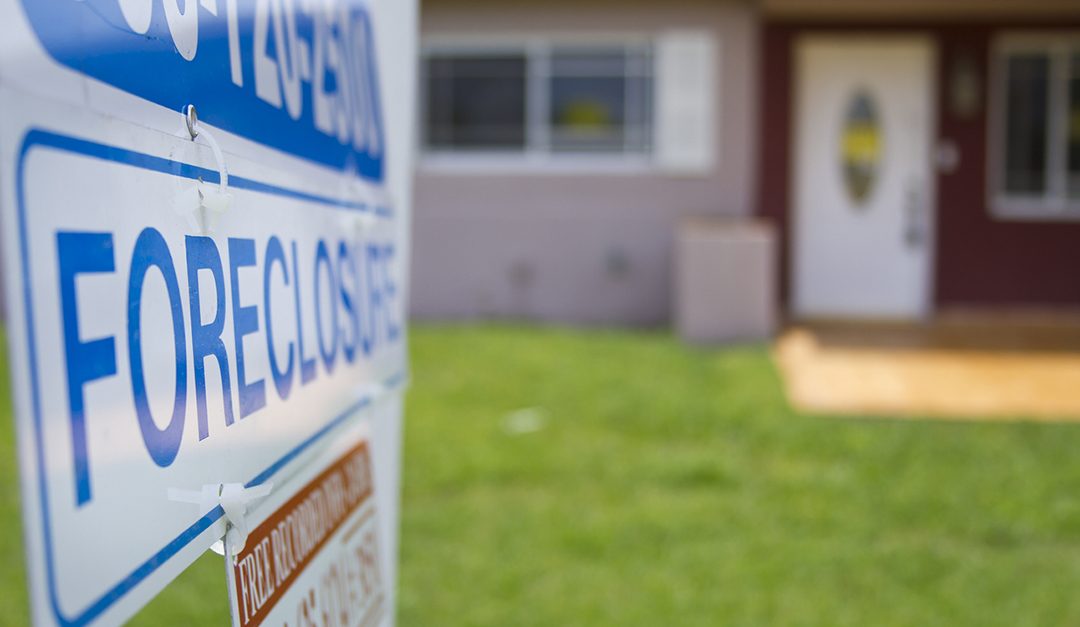Foreclosure filings are continuing to decrease but delinquent loans remain high, leaving a hazy picture of housing distress even amid a recovering market. According to new data from ATTOM Data Solutions, the looming moratorium deadline could soon clear things up.
ATTOM’s Midyear 2021 U.S. Foreclosure Market Report found that a total of 65,082 U.S. properties filed for foreclosure in the first six months of 2021. Compared to last year, that’s 61% fewer homes. Two years ago, foreclosure rates were 78% higher.
Foreclosure activity, however, largely varies by location. Some markets have gone against the grain, reporting higher levels of foreclosure filings.
The details:
– The following metros reported foreclosure increases: Tyler, Texas (up 88%); Brownsville, Texas (up 21%); Springfield, Illinois (up 19%); Sioux Falls, South Dakota (up 9%); and Lake Charles, Louisiana (up 5%).
– These states reported the highest foreclosure rates in the first half of 2021: Delaware (0.10% of housing units with a foreclosure filing), Illinois (0.09%), Florida (0.08%), Ohio (0.08%) and Indiana (0.08%).
– Foreclosure starts are down: 36,742 U.S. properties started the foreclosure process in the first six months of 2021, down 63% from the first half of 2020 but up 14% from the last half of 2020.
– In the second quarter, in 92% of markets, foreclosure activity was below pre-recession averages—this is the 19th consecutive quarter with foreclosure activity below the pre-recession average.
The takeaway:
“The government’s foreclosure moratorium and mortgage forbearance program have created an unprecedented situation—historically high numbers of seriously delinquent loans and historically low levels of foreclosure activity,” said Rick Sharga, executive vice president of RealtyTrac, an ATTOM company. “With the moratorium scheduled to end on July 31, and half of the remaining borrowers in forbearance scheduled to exit that program over the next six months, we should start to get a more accurate read on the level of financial distress the pandemic has caused for homeowners across the country.”
While uncertainty still lingers, various real estate experts continue to express optimism and confidence in the market’s increasing demand, cutting through concerns that we may experience a wave of foreclosures following the end of the moratorium.
“I believe that anyone who’s fallen behind on their payments and wants to sell their home will have a buyer willing and able to purchase for potentially more than what they think their home is worth right now and enough to cover the mortgage and late payments,” Rei Mesa, president and CEO of Berkshire Hathaway HomeServices Florida Realty, said in an earlier interview with RISMedia.
Another indicator of a robust economy is the lack of repossessions. Bank repossessions have decreased to their lowest level—down 74% YoY with only 9,730 U.S. properties foreclosed on in the first six months of 2021.
“Fewer bank repossessions may be a trend we continue to see even after the government’s programs protecting borrowers from foreclosure expire,” Sharga noted. “Rising home prices have provided most homeowners with enough equity to sell their homes at a profit, rather than lose them to a foreclosure or repossession.”
Preparedness has been key, with the Consumer Financial Protection Bureau (CFPB) emphasizing the importance of providing homeowners with the necessary educational resources but warning the industry not to let their guard down.
“An unchecked wave of foreclosures would also risk destabilizing the housing market for all consumers,” Dave Uejio, CFPM acting director, said in June. “We are giving homeowners the time and opportunity to make informed decisions about the best course of action for them and their families, whether that is seeking a loan modification or selling their home.”
 Liz Dominguez is RISMedia’s senior online editor. Email her your real estate news ideas to lizd@rismedia.com.
Liz Dominguez is RISMedia’s senior online editor. Email her your real estate news ideas to lizd@rismedia.com.




